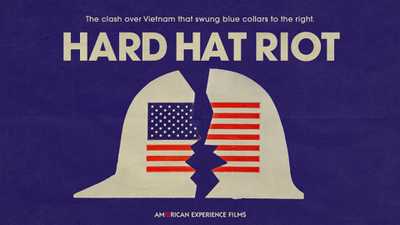German-born political cartoonist Thomas Nast gave America some of its most enduring symbols: the Republican elephant, the Democratic donkey, and Uncle Sam. Publishing regularly in Harper's Weekly, the celebrated Nast drew thousands of cartoons during the second half of the nineteenth century.
Like many Northerners, Nast supported President Lincoln, and he made his reputation by championing the Union's cause and the dignity of black people. But Nast's racial attitudes — like those of many other Americans — were not without contradictions. And as Reconstruction-era corruption and violence spun out of control, he drew cartoons that criticized black legislators as strongly as earlier cartoons had championed black suffrage and lamented white supremacist violence.
-

August 5, 1865
Credit: Library of Congress
Columbia's sympathetic gesture towards a wounded black soldier is a reply to a previous panel in which Southern landowners ask her forgiveness. Columbia asks, "Shall I Trust These Men, and Not This Man?" -

March 23, 1867
Credit: Courtesy: Harvard College Library
In this view of Southern justice, a Northerner and a black man are accused of murder and then lynched, while in another panel a Southern gentleman accused of murder is humorously chided by the court. -

March 23, 1867
Credit: Courtesy: Harvard College Library
In this commentary on President Andrew Johnson's veto of the military government bill, Nast portrays the scales of justice favoring the South and the Confederate Army. -

September 2, 1876
Credit: Courtesy: Harvard College Library
Recognizing the failure of Reconstruction, Nast asks, "Is This a Republican Form of Government? Is This Protecting Life, Liberty, or Property? Is This the Equal Protection of the Laws?" -

"One Less Vote."
Credit: Library of Congress
The Fifteenth Amendment, granting black men the right to vote, was ratified in February 1870. Every black vote became a threat to white Southerners' political power. The stone reads, "Negroe Killed, Seymour Ratification, KKK." -

September 5, 1868
"This Is a White Man's Government."Nast's view of the Democratic platform for the divisive presidential election of 1868 places the Democratic candidate in partnership with the poor Irish of the North and loyal Confederates of the South (and its Lost Cause) to keep black men from gaining access to government.
Credit: Courtesy: Harvard College Library -

October 24, 1874
Credit: Library of Congress
The organized violence of the Ku Klux Klan and the White League made life "worse than slavery" for Southern blacks. -

March 14, 1874
Credit: Library of Congress
The cover of Harper's Weekly shows black legislators stooping to name-calling as Columbia says, "You are aping the lowest whites. If you disgrace your race in this way you had better take back seats." -

January 24, 1863
Credit: Library of Congress
Emancipation of Negroes, The Past and the Future. Nast gives higher purpose to the horror of war in his multi-part depiction of the past lives of African Americans and the future Emancipation could bring them. Centered around a picture of a happy black family at a hearth, the image depicts slaves' miserable past in scenes of auctions and physical abuse -- and a view of a future as equals to their former masters. This cartoon was published just a few weeks after President Lincoln signed the Emancipation Proclamation.






